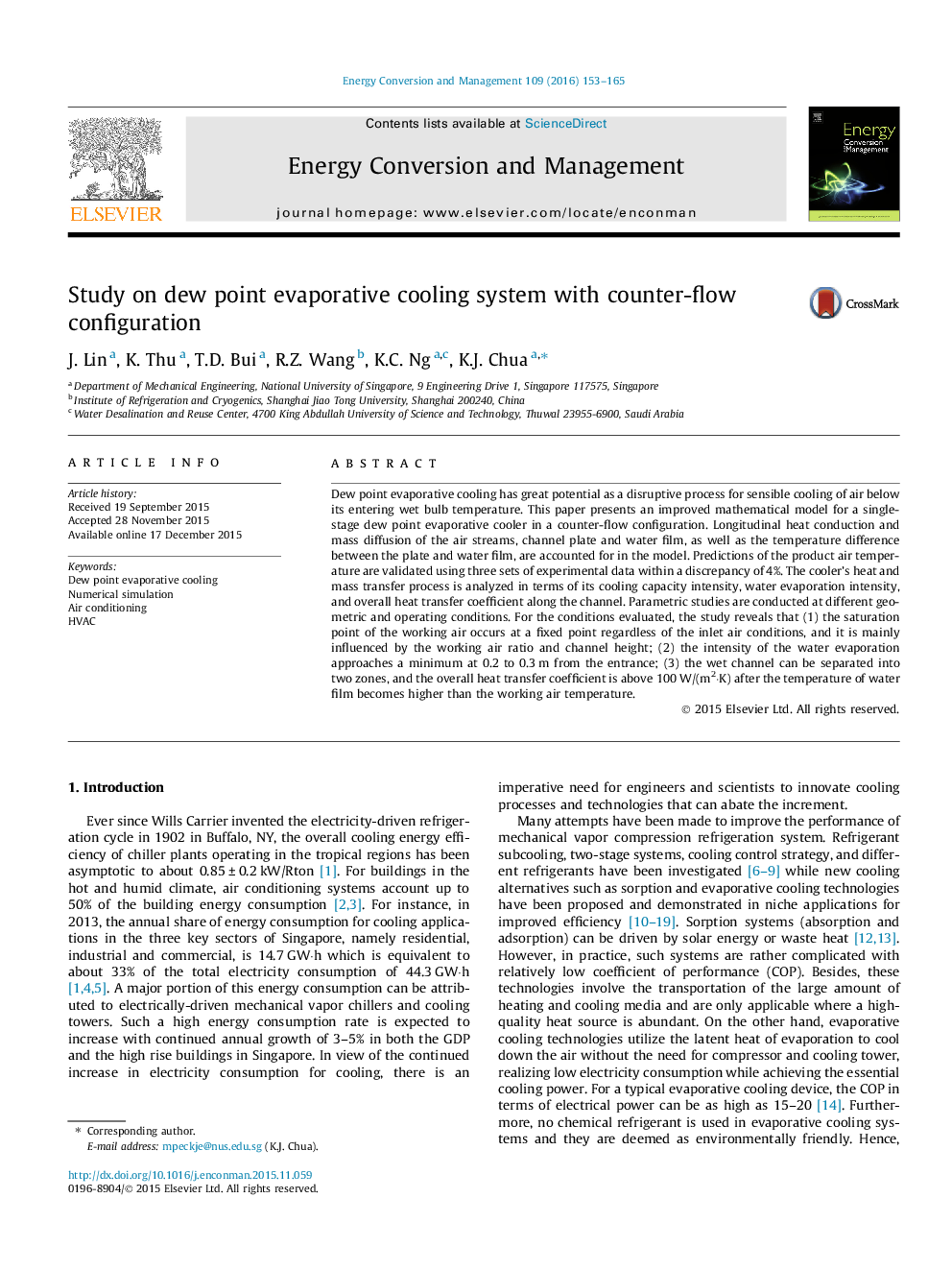| Article ID | Journal | Published Year | Pages | File Type |
|---|---|---|---|---|
| 760430 | Energy Conversion and Management | 2016 | 13 Pages |
•Numerical model for a dew point evaporative cooler verified with experiments.•Saturation point of the working air is independent of the inlet air conditions.•The intensity of cooling capacity and water evaporation are studied.•The overall heat transfer coefficient for the working air is analyzed.•The conditions to achieve sub-wet bulb cooling are examined.
Dew point evaporative cooling has great potential as a disruptive process for sensible cooling of air below its entering wet bulb temperature. This paper presents an improved mathematical model for a single-stage dew point evaporative cooler in a counter-flow configuration. Longitudinal heat conduction and mass diffusion of the air streams, channel plate and water film, as well as the temperature difference between the plate and water film, are accounted for in the model. Predictions of the product air temperature are validated using three sets of experimental data within a discrepancy of 4%. The cooler’s heat and mass transfer process is analyzed in terms of its cooling capacity intensity, water evaporation intensity, and overall heat transfer coefficient along the channel. Parametric studies are conducted at different geometric and operating conditions. For the conditions evaluated, the study reveals that (1) the saturation point of the working air occurs at a fixed point regardless of the inlet air conditions, and it is mainly influenced by the working air ratio and channel height; (2) the intensity of the water evaporation approaches a minimum at 0.2 to 0.3 m from the entrance; (3) the wet channel can be separated into two zones, and the overall heat transfer coefficient is above 100 W/(m2·K) after the temperature of water film becomes higher than the working air temperature.
